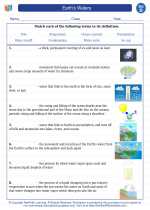Liquid - An Introduction
A liquid is one of the three classical states of matter (the others being solid and gas). It is a fluid that conforms to the shape of its container but retains a constant volume independent of pressure. In comparison to a gas, a liquid has a higher density and is practically incompressible. When a liquid is heated, it can change to its gaseous state (vaporization), and when it is cooled, it can change to its solid state (freezing).
Characteristics of Liquids
1. Fluidity: Liquids can flow and take the shape of their container.
2. Volume: Liquids have a definite volume that does not change with pressure.
3. Density: Liquids are relatively incompressible and have a higher density compared to gases.
4. Surface Tension: The molecules at the surface of a liquid are attracted to each other, creating a 'skin' or 'membrane' on the surface.
5. Viscosity: Liquids have varying viscosities - some flow easily (low viscosity), while others are thicker and flow more slowly (high viscosity).
Examples of Liquids
Some common examples of liquids include water, milk, juice, oil, and alcohol. These substances take the shape of their containers and have a definite volume.
Study Guide
For a comprehensive understanding of the topic of liquids, it is important to focus on the following key areas:
- Define the characteristics of liquids and compare them to those of solids and gases.
- Explore the molecular structure of liquids and how it contributes to their properties.
- Examine real-life examples of liquids and their applications in various industries and daily life.
- Investigate the changes of state that liquids undergo when heated or cooled, and the related concepts of vaporization and freezing.
- Conduct experiments to observe and measure properties such as surface tension and viscosity in different liquids.
By mastering these concepts and conducting hands-on experiments, students can gain a deeper understanding of the unique properties and behaviors of liquids.
[Liquid] Related Worksheets and Study Guides:
.◂Science Worksheets and Study Guides Fourth Grade. Earth's Waters

 Worksheet/Answer key
Worksheet/Answer key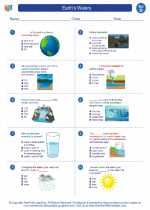
 Worksheet/Answer key
Worksheet/Answer key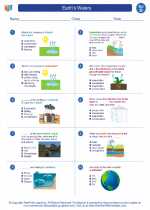
 Worksheet/Answer key
Worksheet/Answer key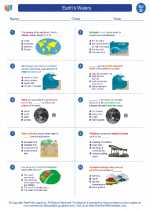
 Vocabulary/Answer key
Vocabulary/Answer key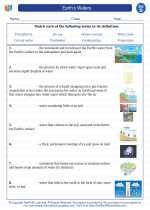
 Vocabulary/Answer key
Vocabulary/Answer key